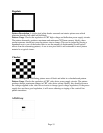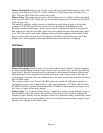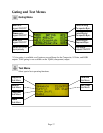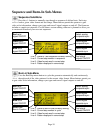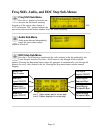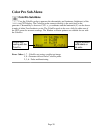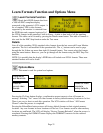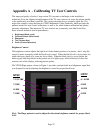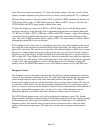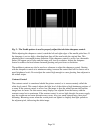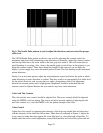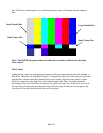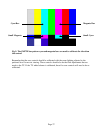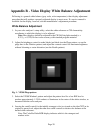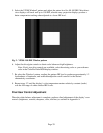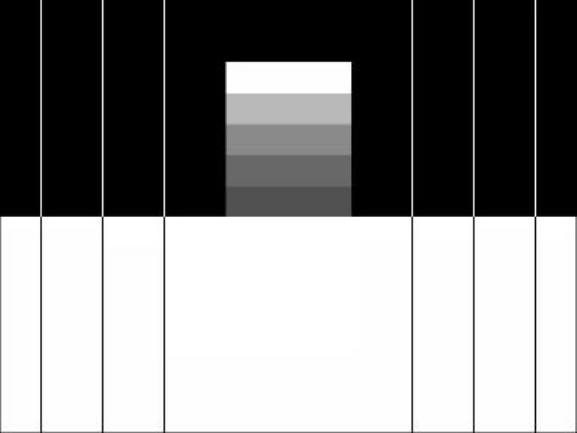
Page 25
Fig 3: The Needle Pulse pattern is used to adjust the television contrast control for proper
white level.
The VP300 Needle Pulse pattern works also very well for adjusting the contrast control for
maximum light level while minimizing raster distortion or blooming. Adjust the contrast control
until the top white bar is the same width as the four gray bars under it. This will ensure that no
pixel blooming is occurring. Also, observe the needle pulses (vertical lines in the picture) as you
adjust the contrast control. These lines should be straight. If the contrast is set too high, the
display’s power supply may cause the needle pulses to bend. This line bending creates unwanted
picture distortion.
Ideally, for an acccurate picture, adjust the contrast/picture control just below the point at which
either blooming or raster distortion is evident. This may result in an unacceptably low white level
for the picture, however, and you may have to make a compromise white level adjustment
between an accurate picture and a bright picture. Brightness should be rechecked after the
contrast control is adjusted because the two controls may have some interaction.
Color And Tint Controls
The color and tint user controls should be adjusted last. These two controls should be adjusted
using the SMPTE color bar pattern. The easiest and most accurate method of adjusting the tint
and color controls is to view the SMPTE color bar pattern through a blue filter.
Color Control
Adjust the color control by comparing the intensity of the large top outside blue and white bars
with the intensity of the small bars below them. These bars are indicated in Figure 4. Adjust the
color control to make these bars appear the same light level, as viewed through a blue filter. To
double-check the color control adjustment, remove the blue filter and look at the yellow and red



